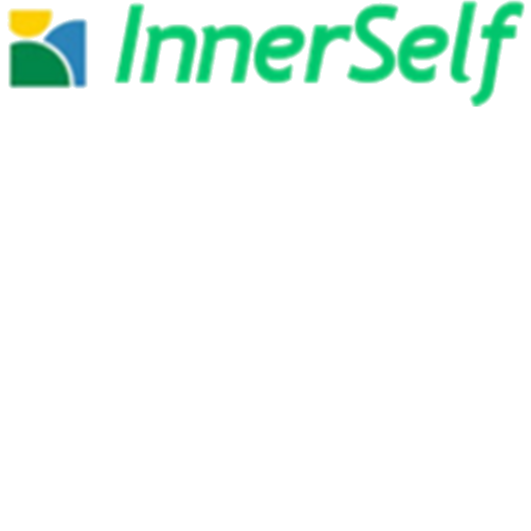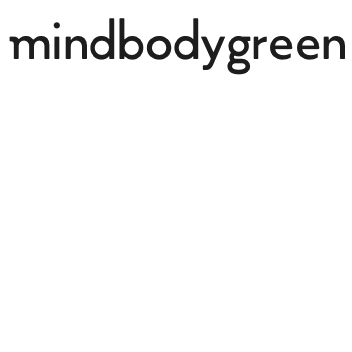It takes strong insight and often a good deal of courage to break away from our habitual ways of looking at things, to be able to respond from a different place.
YOU MIGHT ALSO LIKE
CLEAR ALL
BY TOPIC
BY TEACHER
BY TYPE
FILTER

TOPIC
- Letting Go (21)
- Self-Care (18)
- Self-Mastery (16)
- Athlete Well-Being (15)
- Depression (14)
- Inspiration (14)
- Anxiety (12)
- Black Well-Being (12)
- Parenting (11)
- Perception (11)
- Building Character (10)
- Disabled Well-Being (9)
- Entrepreneurship (9)
- Habit Formation (9)
- Growth Mindset (8)
- Honoring Emotion (8)
- Anger (7)
- Empowerment (7)
- Leadership (7)
- Neurodiversity (7)
- Neuroscience (7)
- Self-Limiting Beliefs (7)
- Talk Therapy (7)
- Work-Life Balance (7)
- ADD/ADHD (6)
- Burnout (6)
- Cognitive Behavioral Therapy (6)
- Emotional Intelligence (EQ) (6)
- Exercise (6)
- Meditation (6)
- Mindfulness (6)
- Performance Pressure (6)
- Self-Discovery (6)
- Self-Esteem (6)
- Self-Pressure (6)
- Activism/Service (5)
- Authenticity (5)
- Empathy (5)
- Grief (5)
- LGBTQIA Well-Being (5)
- Mental Health Challenges (5)
- Performance Anxiety (5)
- Problem Solving (5)
- Self-Actualization (5)
- Setting Limits and Boundaries (5)
- Suicide (5)
- Values (5)
- Young Adult Well-Being (5)
- AAPI Well-Being (4)
- Awareness (4)
- Brain Health (4)
- Community Healing (4)
- Connection with Nature (4)
- Environmental Justice (4)
- Female Empowerment (4)
- Focus (4)
- Indigenous Well-Being (4)
- Mindfulness Practices (4)
- Motivation (4)
- Physical Health (4)
- Psychology (4)
- Stress Management (4)
- Addiction (3)
- Addiction Recovery (3)
- Breathwork (3)
- Child’s Emotional Growth (3)
- Collaboration (3)
- Connection (3)
- Courage (3)
- Digital Life (3)
- Divorce and Breakup (3)
- Fear (3)
- Freedom (3)
- Habits of Mind (3)
- Human Potential (3)
- Latinx Well-Being (3)
- Men’s Well-Being (3)
- Mind-Body Connection (3)
- Negative Self-Talk (3)
- Peak Performance (3)
- Productivity (3)
- Relationship Challenges (3)
- Self-Control (3)
- Self-Development (3)
- Self-Love (3)
- Self-Reflection Practices (3)
- Self-Worth (3)
- Trauma Healing (3)
- Well-Being (3)
- Acceptance (2)
- Cancer (2)
- Challenges with Teens (2)
- Chronic Anxiety (2)
- Climate Change (2)
- Communication Skills (2)
- Confidence (2)
- Conscience (2)
- Consciousness (2)
- Curiosity (2)
- Death or Loss of a Loved One (2)
- Discrimination (2)
- Eating Disorders (2)
- Epigenetics (2)
- Family Dynamics (2)
- Goal Setting (2)
- Grit (2)
- Identity (2)
- Inner Peace (2)
- Intuition (2)
- Laughter Therapy (2)
- Life Challenges (2)
- Loneliness (2)
- Offering Support to Others (2)
- Personal Development (2)
- Personality Typing (2)
- Play (2)
- Poetry (2)
- PTSD (2)
- Resilience (2)
- Search for Purpose (2)
- Shame (2)
- Sleep (2)
- Slumps (2)
- Soul Mission (2)
- Speaking Your Truth (2)
- Spiritual Growth (2)
- Spiritual Life (2)
- Storytelling (2)
- Stress (2)
- Sustainability (2)
- Transgender Well-Being (2)
- Traumatic Grief (2)
- Trust (2)
- Visualization (2)
- Willpower (2)
- Women’s Well-Being (2)
- Work Challenges (2)
- Abandonment (1)
- Alcohol Addiction (1)
- Altered States (1)
- Asking for Help (1)
- Autism (1)
- Awe (1)
- Belonging (1)
- Body Image (1)
- Buddhism (1)
- Bullying (1)
- Caregiver Well-Being (1)
- Child’s ADD/ADHD (1)
- Chronic Health Conditions (1)
- Clinical Depression (1)
- Compassion (1)
- Criticism and Rejection (1)
- Cross-Cultural Dynamics (1)
- Cross-Cultural Parenting (1)
- Death or Loss of a Child (1)
- Disconnection (1)
- Doubt (1)
- Dysfunctional Childhood (1)
- Emotional Labor (1)
- Energy Healing (1)
- Environmental Exploitation (1)
- Failure (1)
- Family Therapy (1)
- Fatigue (1)
- Feminism (1)
- Finding Meaning (1)
- Flower Essences (1)
- Forest Bathing (1)
- Forgiveness (1)
- Friendship (1)
- Genetics (1)
- Guided Meditation (1)
- Happiness (1)
- Healing Approaches (1)
- Healthy Eating (1)
- Higher Calling (1)
- Immigration and Assimilation (1)
- Imposter Syndrome (1)
- Indigenous Healing Approaches (1)
- Inner Child (1)
- Inner Life (1)
- Insomnia (1)
- Integrative Medicine (1)
- Integrity (1)
- Intention (1)
- Journaling (1)
- Joy (1)
- Kabbalah (1)
- Life Force Energy (1)
- Life-Altering Injury (1)
- Living as an Empath (1)
- Lovingkindness (1)
- Managing Energy (1)
- MDMA (1)
- Mindfulness Meditation (1)
- Motherhood (1)
- Narcissism (1)
- Neuroplasticity (1)
- OCD (1)
- Othering (1)
- Panic Attacks (1)
- Patience (1)
- Positive Psychology (1)
- Positive Self-Talk (1)
- Positive Thinking (1)
- Presence (1)
- Psychedelic Journey (1)
- Psychedelic Research (1)
- Psychedelic-Assisted Therapy (1)
- Quantum Physics (1)
- Racial Discrimination (1)
- Raising Daughters (1)
- Regret (1)
- Relationship with Time (1)
- Rest (1)
- Self-Acceptance (1)
- Self-Compassion (1)
- Self-Expression (1)
- Self-Healing (1)
- Self-Realization (1)
- Self-Reliance (1)
- Sleep Disorders (1)
- Social Anxiety (1)
- Social Justice (1)
- Social Psychology (1)
- Social Responsibility (1)
- Spiritual Practices (1)
- Subconscious (1)
- Synesthesia (1)
- Tarot (1)
- The Divine (1)
- The Unconscious (1)
- Tibetan Buddhism (1)
- Transcendent Experience (1)
- Transformation (1)
- Trauma-Informed Therapy (1)
- Unconscious Bias (1)
- Unfulfilled Career (1)
- Vulnerability (1)
- Work Ethic (1)
- Yoga (1)
- Zen Meditation (1)
FILTER

TEACHER
- Jay Shetty (2)
- Jessica Dore (2)
- Joanne Cacciatore (2)
- Judith Orloff (2)
- Julia Cameron (2)
- Karla McLaren (2)
- Maria Popova (2)
- Mark Manson (2)
- Martha Beck (2)
- Michael A. Singer (2)
- Michael Phelps (2)
- Rick Hanson (2)
- Abraham Maslow (1)
- Adam Grant (1)
- Brendon Burchard (1)
- Carol Dweck (1)
- don Jose Ruiz (1)
- Edward Hallowell (1)
- Edward Hoffman (1)
- Eric Maisel (1)
- Gabor Maté (1)
- Hyla Cass (1)
- Jack Kornfield (1)
- Judson Brewer (1)
- Karen Casey (1)
- Lama Surya Das (1)
- Lissa Rankin (1)
- Matt Kahn (1)
- Monnica Williams (1)
- Nancy Mellon (1)
- Nataly Kogan (1)
- Oprah Winfrey (1)
- Rhonda Magee (1)
- Rolf Gates (1)
- Rupi Kaur (1)
- Saeed Jones (1)
- Sandra Ingerman (1)
- SARK (1)
- Scott Shute (1)
- Simone Biles (1)
- Stephen Covey (1)
- Sue Morter (1)
- Ta-Nehisi Coates (1)
- Tara Brach (1)
- Tara Mohr (1)
- Tony Robbins (1)
- Wim Hof (1)







